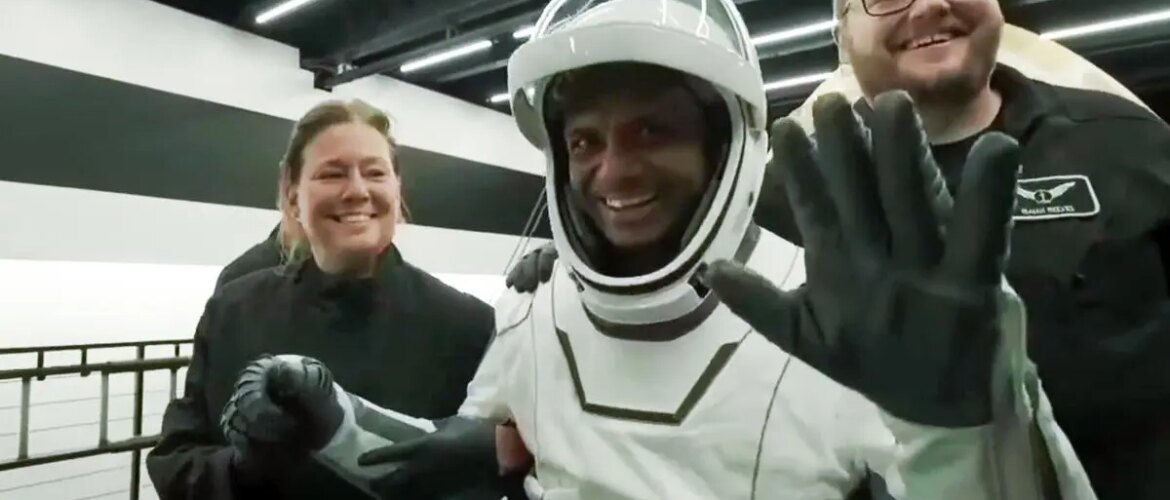
Group Captain Shubhanshu Shukla and Axiom-4 crew assisted out of the Dragon Spacecraft onto the recovery vehicle, after their return to earth from the International Space Station 18 days later, on Tuesday.
| Photo Credit:
ANI
Group Captain Shubhanshu Shukla’s epochal space voyage, which ended on Tuesday, when the capsule, Crew Dragon ‘Grace’, splashed down in the Pacific Ocean off the California coast, will be etched as a defining moment in India’s space story. Shukla circled the world 288 times, from 400 km above, clocking over 12.2 million km; he is the most travelled Indian. Just as Squadron Leader Rakesh Sharma’s leap into space 40 years ago is fondly remembered even today, Shukla’s journey to the International Space Station, his 18-day sojourn there and his safe return, will remain part of India’s lore.
To view Shukla’s feat as a joyride would not only be to trivialise the practical value of the experience to India’s human space flight programme, Gaganyaan, but also miss its beacon-like symbolism in the current milieu. When Sharma travelled in a Soviet spaceship during the peak of the Cold War, the geopolitical scene was vastly different from today’s. India, as a key member of the Soviet camp, got some goodies. In contrast, the geopolitical factor weighed little in Shukla’s mission. The fact that the US space agency, NASA, not only welcomed an Indian onboard a space mission — without a fee — but also entrusted to him the crucial task of piloting the capsule, underscores the world’s recognition of India as a rising scientific nation; a point also borne out by other joint missions such as the imminent NASA-ISRO Synthetic Aperture Radar (NISAR) satellite launch.
While space capsules are autonomous and mostly pre-programmed, the pilot is there to take over if something goes wrong, and is therefore trained to perform all operations, including docking, de-docking, correcting orbit by operating the thrusters and handle emergencies, such as taking a call on triggering the Launch Escape System, if necessary. Giving the job to an Indian, is really NASA’s acknowledgement of its confidence in India.
Shukla’s personal sampling of space has made him a knowledge repository, dipping into which will help India’s space agency, ISRO, fine-tune its medical protocols, atmospheric re-entry procedures and real-time telemetry for the Indian human space flight mission, Gaganyaan. Shukla also performed about 60 experiments, under conditions of microgravity, under seven India-specific heads of research, such as checking muscular dystrophy with electrical pulses on the body of an Indian, seed germination of Indian strains of crops like millets and mustard and the survival of Indian strains of tardigrades and cyanobacteria. It is believed that India spent about $70 million to train Shukla and send him to the ISS. It is money well spent, given the cache of learnings that Shukla has returned with. His mission must be viewed in the context of India’s other successes — the Mars mission, Mangalyaan, the famous moon landing, Chandrayaan-3, docking and de-docking and shooting down a satellite in space. At the ISS, Shukla had said that India looked “ambitious, fearless, confident and full of pride”. It is hard to disagree.
Published on July 16, 2025



Leave A Comment